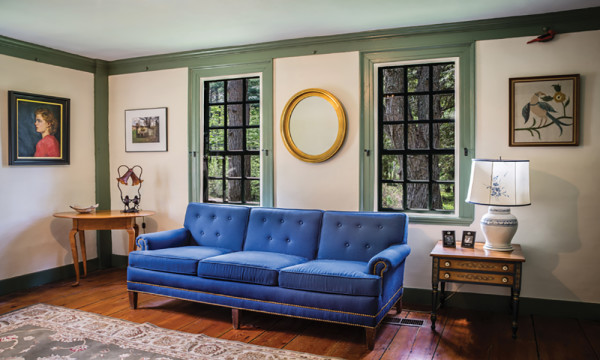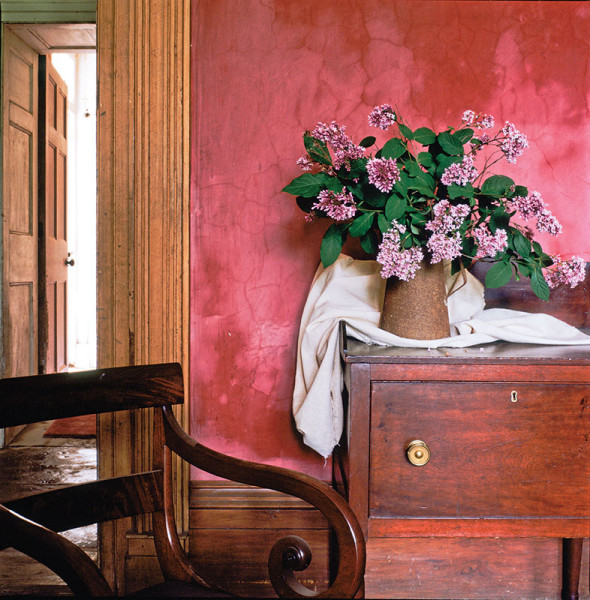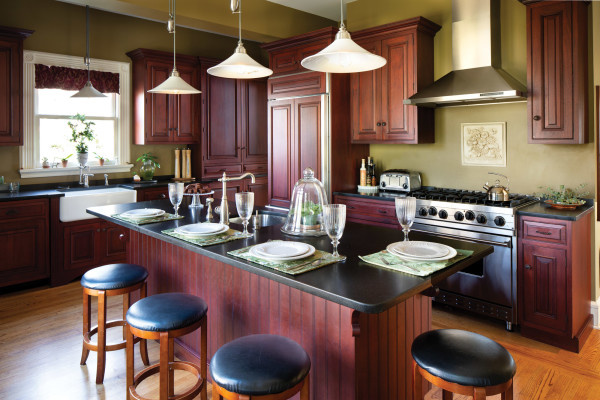Ah, that list of home-repair projects we dream of completing. We old-house owners always have one, but are all worth the time and energy? No one wants to break the bank renovating their house. By prioritizing needs over wants, saving where you can, and spending in places where your heart really wants to splurge, you can get through it with considerably less stress, and reduce feeling overwhelmed by house renovation tasks. For example, here are three instances where a simple, affordable solution may be better than what you were thinking.
1. Don’t replace your windows. Install storm windows instead.
Indow interior inserts on historic windows.
Gut renovation is rarely needed and it can ruin what’s best about an old house. Furthermore, not everything “old” is replaceable in kind. Old windows, for example, are an important aspect of the character of any house. In fact, in real estate markets where vintage architecture is part of the demand, there’s evidence that sensitively maintained historic windows hold their value. Furthermore, old wood windows were designed to be repaired. The new ones have a short lifespan and then are headed to a landfill.
The number one complaint about old windows is that they’re drafty. This is a remarkably easy problem to solve without losing any of the window’s beautiful craftsmanship. Consider window inserts, also known as interior storms, instead of replacement of the prime window. Consider that 30% of windows being replaced today are less than a decade old! Plastic parts break and often can’t be replaced. Well-made old windows that have lasted for a century or more can last another 100 years if properly maintained. Vinyl window replacements cost $17,000 in an average home where Indow inserts cost $4,000 for the same job. Wood replacements cost even more. Investing in standard-grade interior storm windows, from a company like Indow, allows you to keep out the drafts without blocking the view—or the light!
Indow window inserts press smoothly into place on the inside of your existing window frames without the use of nails, screws, or glue; they work with compression tubes to lock them safely into place. No window modification is needed. You’ll get the bonus of energy savings from the benefits of double-pane windows. What’s more: Outside noise will be reduced by 50% or more, a boon if you live on a busy city street. The low-profile design of Indow inserts means you won’t notice they’re there, but if you’re standing next to the window, you’ll be able to feel the no-draft difference.
2. Repair plaster walls instead of replacing them with drywall.R
Original plaster is a traditional building material and a historic element of any older home. Gross & Daley
If you’re feeling overwhelmed with house renovation list items, take a closer look at what you’ve set out to change. If you think that a cracked plaster wall needs to be ripped out and replaced or covered up with drywall, think again. Original plaster is a traditional building material and a historic element of any older home. Replacing it with drywall will change the appearance of walls, reduce their acoustic value—and could negatively affect the value of the house, especially in historic neighborhoods.
Cured plaster is a rigid material that should last for centuries. However, certain conditions cause plaster to crack, effloresce, or become detached from its lath framework. These include:
- Moisture
- Improper curing
- Structural problems
- Poor workmanship
If major structural issues are found to be the source of the problem, those should be corrected by professionals. However, minor structural problems that don’t endanger the building are typically only cosmetic. These minor blemishes occur during minimal building movement; holes or bowed areas can be repaired without much hassle. Dig out cracks in a V-notch and infill with plaster or a setting compound for a seamless repair.
Be sure to practice first in an inconspicuous spot, such as in a closet, before moving on to more visible locations.
3. Restore or refresh kitchen cabinets instead of replacing them.
A restored Queen Anne kitchen. Steve Gross & Susan Daley
Some old-house owners think they need to “redo the kitchen” by pitching everything old and bringing in the new. Hold on! Cabinets are the biggest expense. But consider whether they are truly failing. This is yet another way you can lessen feeling overwhelmed by house renovation projects. Sometimes a deep cleaning and degreasing, or sanding and restaining or repainting, is all that’s needed. The work is often DIY. You’ll save money, so you can spend it on upgrades to hardware, lighting, and appliances. Plus: your old cabinets won’t end up in the trash.
Some quick tips:
- Wood cabinets take to refinishing; not so much vinyl or laminate, or those that were finished with a penetrating oil.
- When you remove hardware, then doors and drawers, label everything so you can put it back together. Mask floor, countertops, backsplashes, and door openings before you sand or paint.
- Clean and degrease with diluted TSP or a degreasing cleanser, rinse, and dry.
- Fill defects with wood filler, sand, and wipe with a tack rag. Lightly sand every surface and wipe with a tack rag.
- Use compatible stains, primers, and paints—ask at your paint store.
- When you’re updating lighting, don’t forget what a little natural light can do.
Hardware may need replacement, but often owners upgrade because they want more stylish knobs and pulls. This can change the tone of the room. Try to buy new hardware that matches the old placement of screw holes, so you won’t have to fill or patch and redrill.
If this is a project you’d rather not do yourself, seek out a carpenter skilled in preserving old cabinets. Repair, rehanging, refinishing—any and all may be less disruptive and expensive than replacing cabinets. Refinished original built-ins, cabinets, and trim have character and patina that’s hard to come by in newly remodeled kitchens.







